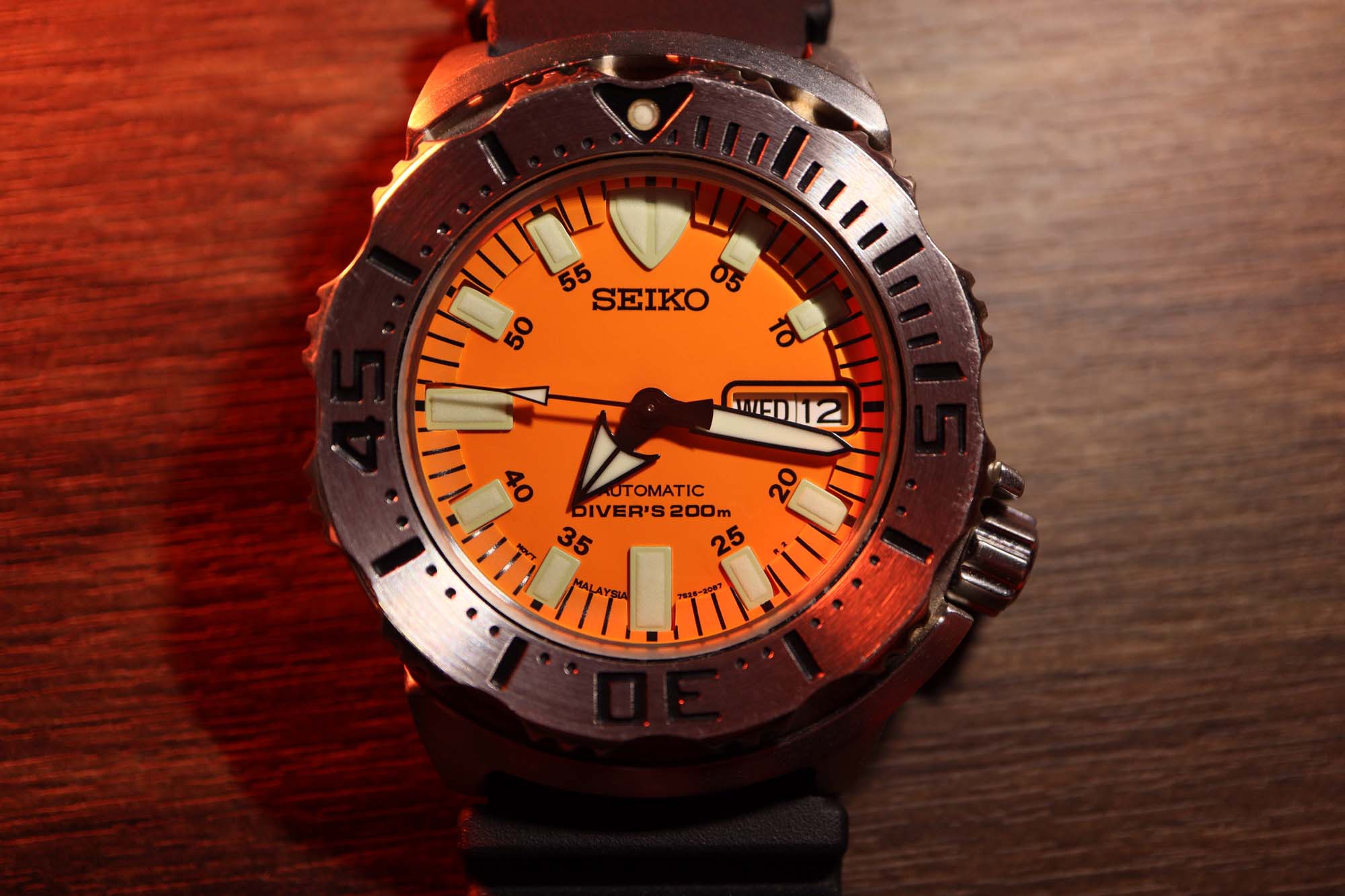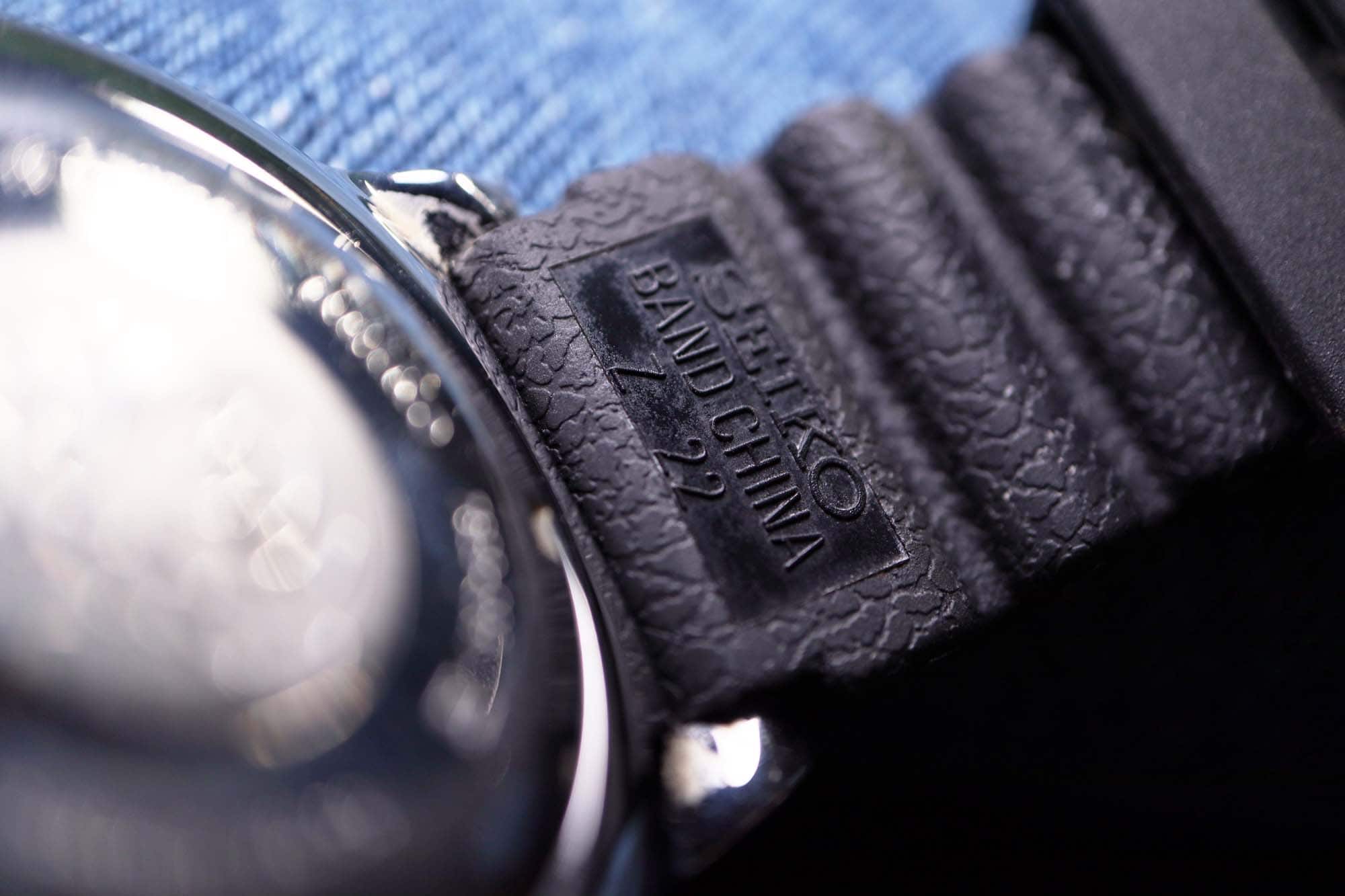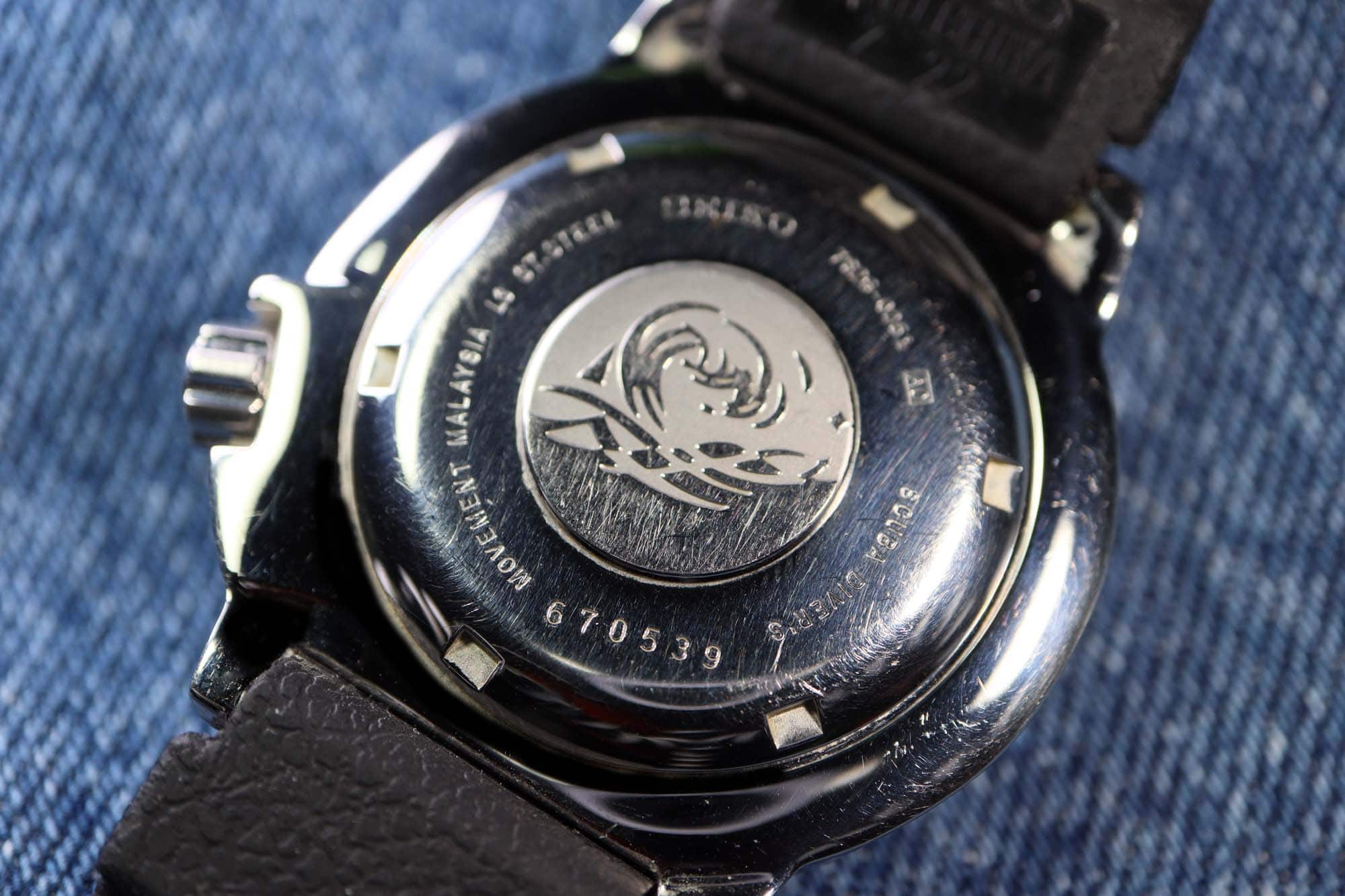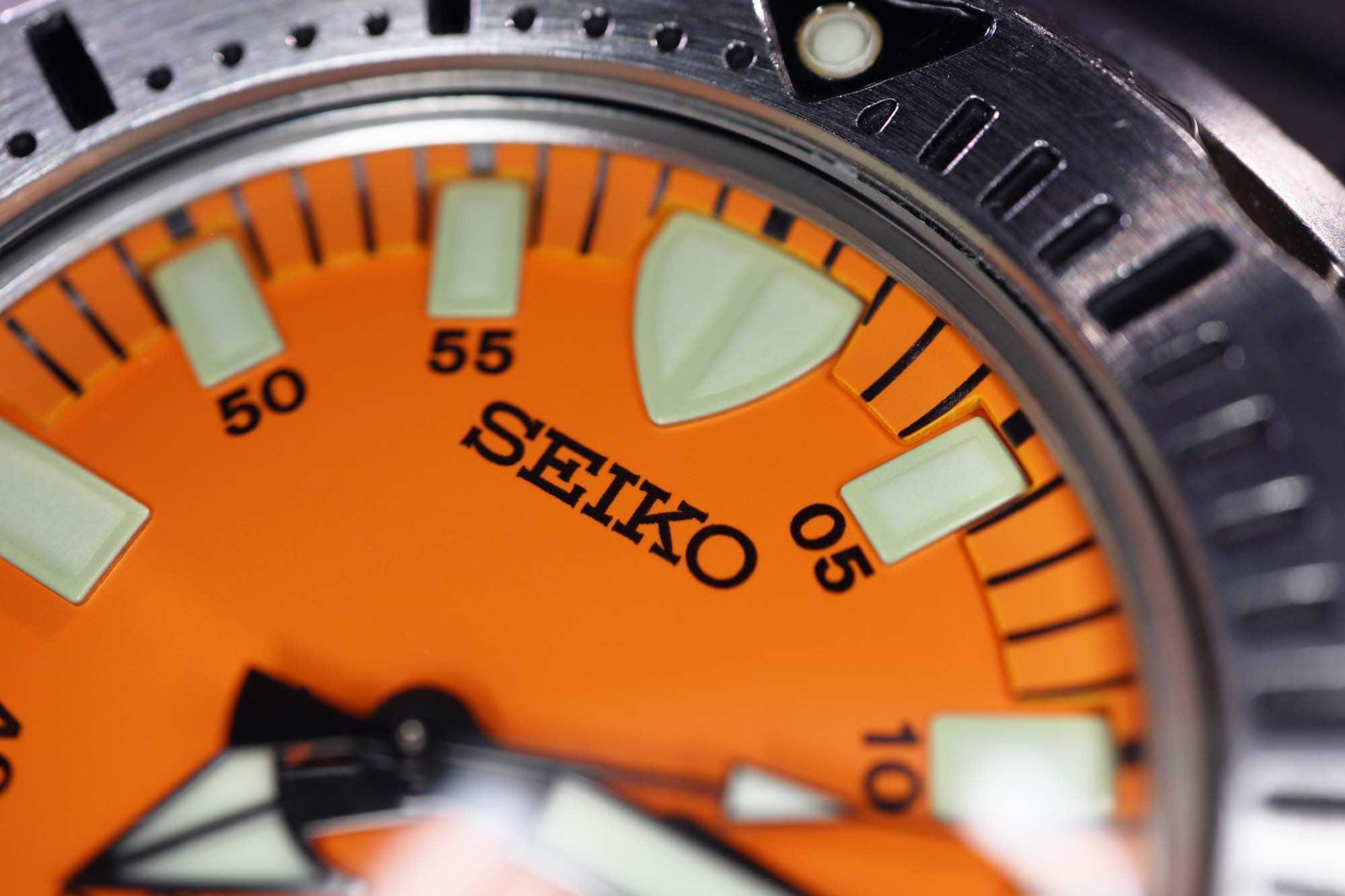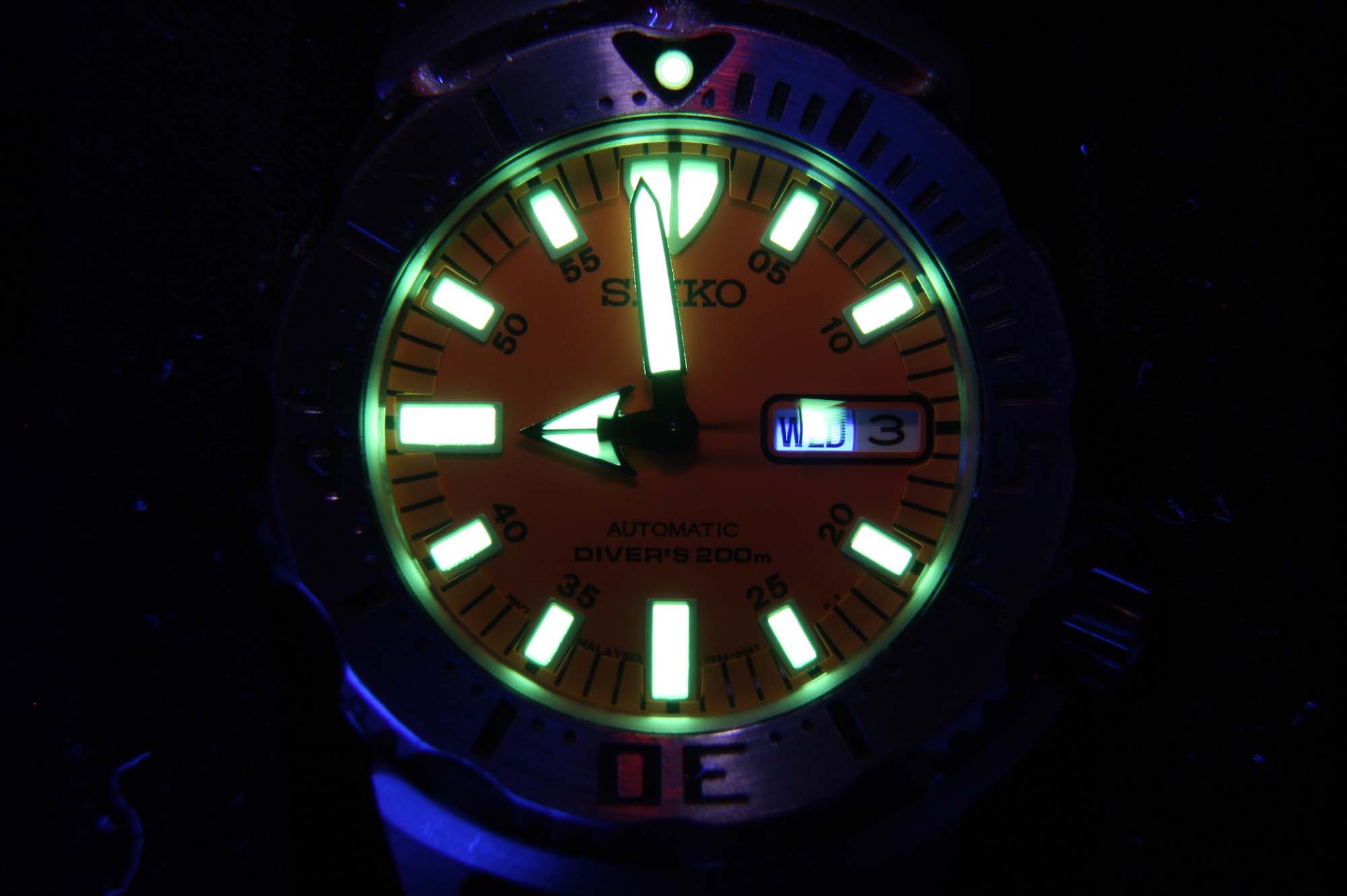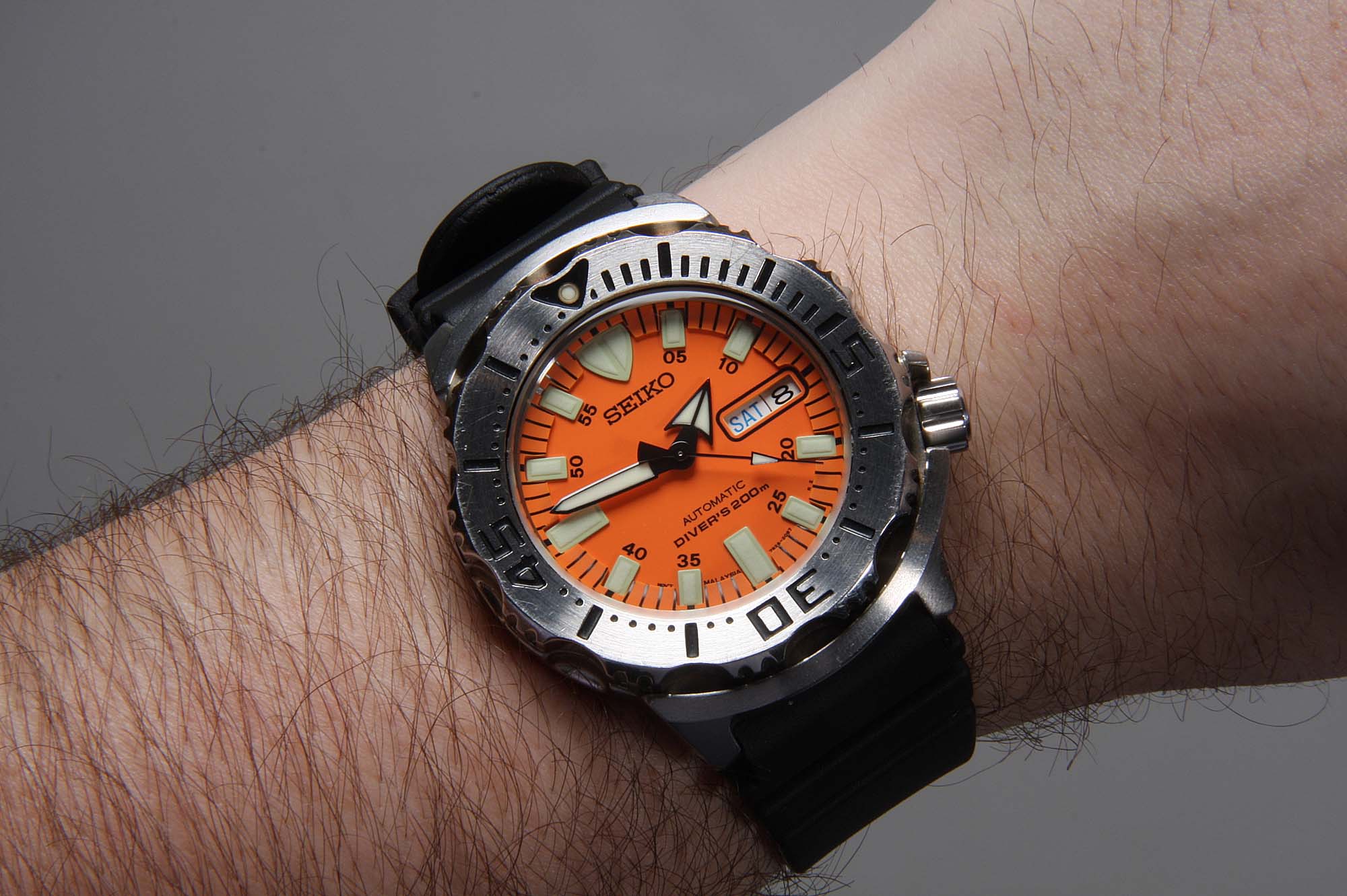“If it ain’t broke, don’t fix it” is an idiom that will seemingly always ring true throughout the watch industry for brands of all different origins and ages. There are certain watch models that are so easily recognizable because of their distinctive and timeless looks, and while other companies eventually attempt to replicate them and hopefully attain the same amount of success, they can never truly capture the essence of the original. The Seiko Orange Monster may not be everyone’s cup of tea. It’s a girthy diver with a bright dial, large lume-filled indices, and a heavy-duty stainless-steel shroud that I’m quite positive would look amiss with a three-piece suit. That being said, however, millions worldwide have embraced its robust and striking aesthetics over the years. The First-Generation models, while similar to their successors on the surface, have cemented themselves as cult classics within the collector sphere. Why? For a few reasons, I think.
Reason 1: An Overall Oddity with Near Perfect Proportions
When the Monster series was first announced, there was nothing quite like it on the market. Reception upon its initial release of reference SKX781 in 2000 was polarizing––some found the ambitious design, for lack of a better term, ugly. As time went on, more and more skeptics began to fall for its unique aesthetics and Seiko, noticing this trend, continued production of the Monster series for over two decades with minor tweaks here and there.
The Orange Monster’s design is incredibly deceptive when it comes to dimensions. Even with the stainless-steel bezel and shroud, it measures in at only 42.5mm across, 47.5mm lug-to-lug, has a 20mm lug width, and is an impressive 12.5mm thick. For reference, the iconic SKX007/9 is 42.5mm in diameter and a larger 13.25mm thick. Its price was also a sizable selling point and key reason why the Monster series sold so well. A screw down case back and crown, 200-meter water resistance and full stainless-steel construction on a watch with an MSRP of roughly $250 was, and still is, impressive.
Reason 2: The First of Its Kind with A Digestible Price Tag
Acquiring the first example of any watch model just feels special. There are several dozen different Monster variants and colorways on the used market to choose from, but owning the original is a way to celebrate the series and its history overall. The Gen 1 Orange Monster currently has an average price of anywhere between $250-400––mainly dependent on condition and if the original bracelet (typically found on non-U.S. models) or the rubber strap are included. If the bright orange colorway is a bit too flashy, or if adding another orange dial watch to your collection may seem redundant, I invite you to look into the First-Generation Black Monsters (SKX779) that follow the same design distinctions discussed here and cost roughly the same price.
Reason 3: Mechanical and Aesthetic Distinctions
The 21-jewel 7S26 movement powering the Gen 1 Monster may not be as feature-filled as other automatics in the Seiko line-up, but it’s a resilient mechanism with a reputation for longevity. Lacking hacking and hand winding may dissuade some, but its status as a workhorse movement still makes it worthy of picking up. Beating at 21,600bph, it has the smooth sweep of the 4R36 and 6R15 movements featured in the subsequent models, with a quickset day/date complication and power reserve of 41 hours similar to the 4R36 but less than the 50-hour max of the 6R15. Seiko included the 7S26 in dozens of watch models throughout the 1990s and 2000s, so parts and movement replacement availability shouldn’t be an issue if a problem were to arise.
Getting into the visual differences, there are mainly 2 distinctions that set the Gen 1’s apart from the other Monsters. First, the 05-60 seconds track in front of the indices is only found on the First-Generation models and adds just the right amount of extra busyness to an already loud dial. I find their inclusion helpful in balancing the dial’s color palette and enhancing the watch’s overall symmetry, though I must acknowledge that I’ve always had a bias for a busy, text-filled dial.
The second is the light pistachio green indices. Seiko’s LumiBrite has always been a fan-favorite, and its application here does not disappoint. Even after years of use, the lume still glows bright and is easily visible for hours after an initial charge. The color of the indices is largely dictated by the sizable plots of lume, but Seiko also painted the non-lumed portions with the same off-white, greenish shade. It’s an interesting choice and one I quite like, though future models did away with this in favor of stark-white, shark teeth-shaped indices.
So, Should You Buy One?
If you like the aesthetics of the Gen 1 and value the appeal of owning a piece of Seiko history, I cannot recommend picking one of these up enough. The design itself is weird, yes, but it works so well on the wrist. It’s a fun weekend watch that will add a bit of color to any collection, all while surviving almost any physically demanding task with its heavy-duty construction and easily replaceable strap.
The subtle nuances that make the First-Generation Monsters distinguishable from subsequent iterations is an aspect that, to me, makes them all the more special. Whether this article has piqued your interest in these models or not, I hope you’re able to walk away with some valuable information on what differentiates the Gen 1 Monsters from the rest of the lineup and why they retain their value to this day. Seiko
